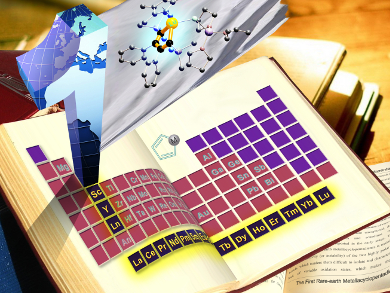Metallacyclopentadienes of s-, p-, and d-block metals have received considerable attention in organic synthesis and organometallic chemistry over the past six decades because of their unique metallacyclic structure. In contrast, investigations on f-block metallacyclopentadienes are scarce. Wen-Xiong Zhang and colleagues, Beijing National Laboratory for Molecular Sciences, China, have succeeded in the isolation of the first well-defined lutetacyclopentadienes, synthesized from pentamethylcyclopentadienyl lithium, 1,4-dilithio-1,3-butadienes, and LuCl3.
The researchers investigated the reactivity of one of the lutetacyclopentadienes towards small molecules, resulting in the formation of new 3-, 5-, 7-, 8-, and 9-membered rare-earth metallacycles. In case of pivalaldehyde, the monoinsertion product was obtained through the insertion of carbonyl into one Lu–C(sp2) bond. Subsequent insertion of selenium leads to the formation of 8-membered rare-earth metallacycles. For CO2, double insertion followed by disproportionation gave a complex with D3 symmetry. In case of isonitrile, a spiro compound was formed, in which the lutetium centre locates on the bridgehead. The differences in reactivity can be attributed to the highly ionic character and the cooperative reactivity of the Lu–C(sp2) bonds. This will pave new avenues to explore the synthesis and reactivity of rare-earth metallacyclopentadienes.
- The First Lutetacyclopentadienes: Synthesis, Structure, and Diversified Insertion/C–H Activation Reactivity,
Ling Xu, Yu-Chen Wang, Junnian Wei, Yang Wang, Zitao Wang, Wen-Xiong Zhang, Zhenfeng Xi,
Chem. Eur. J. 2015.
DOI: 10.1002/chem.201500387




